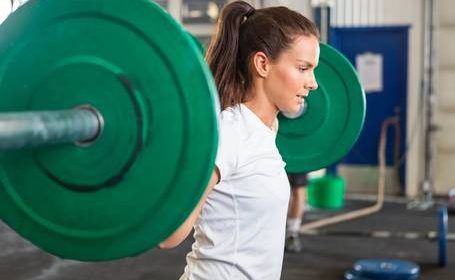Want to stay healthy for longer? Lift weights twice a week (or, if you're over 65, dust off your dancing shoes)

Adults should do muscle strengthening exercises such as weightlifting twice a week, while older people should put on their dancing shoes, according to expert advice.
Activities to develop or maintain strength in the major muscle groups should be performed at least twice a week, according to the UK Chief Medical Officers’ Physical Activity Guidelines.
Examples of these could include:
‣ Lifting weights;
‣ Using resistance machines;
‣ Heavy gardening;
‣ Carrying heavy shopping;
‣ And holding young children.
They should be repeated until the muscles feel temporarily “tired out” and unable to repeat the exercise until rested, the guidelines recommend.
Strength-based exercise can help delay the natural decline in muscle mass and bone density that starts from around age 50.
This is believed to be a central reason for why older people lose their ability to carry out daily tasks.
Those aged 65 and over are advised to focus on activities that improve or maintain muscle strength, balance and flexibility, such as bowls, dancing and tai-chi.
This could also help minimise the risk of falls – the number one reason older people are taken to A&E.
READ MORE: No mean feat: WWII vet James (99) flies the Irish flag at Tango World Cup
The guidelines say: “Physical activity plays a changing role in the lives of older adults, as for some it becomes more about the maintenance of independence and the management of symptoms of disease, rather than primary disease prevention.
“There is enough knowledge of the benefits associated with physical activity in older adults to categorically state that they outweigh the risks.
“In older adults with frailty, moderate-to-severe dementia, or a history of vertebral fractures or regular falls, it might be more appropriate for any new exercises to be initially supervised by a trained professional, to ensure efficacy and safe techniques to avoid injury.”
Chief Medical Officer for England, Professor Dame Sally Davies, added: “Physical activity is an under-appreciated asset in our clinical arsenal. It is cheap and brings a long list of health benefits.
“As we age, our muscles weaken and we can become stiff, leading to falls and difficulty performing everyday activities. Physical activity can prevent fragility and support mobility in old age.
“By keeping active, both throughout the day and also through hobbies, we can slow muscle and bone decline, ultimately keeping us independent for longer.”
READ MORE: 15 tips for positive ageing
At whatever age, sedentary periods should be minimised or broken up where possible, the guidelines advise.
They say that sitting for long periods of time is harmful, even in people who achieve the recommended levels of exercise each week.
For the first time, the advice includes information for pregnant women and people with disabilities.
Adults with or without a disability can experience the same benefits from exercise, the guidelines say, adding that “any myths about physical activity being inherently harmful for disabled people should be dispelled”.
Exercise, including strength training, can also be safely recommended to women during and after pregnancy.
READ MORE: Pregnancy fitness: The dos and don’ts of prenatal exercise with Siobhán Byrne
The benefits of exercise during pregnancy include reduced hypertension, improved cardiorespiratory fitness; lower gestational weight gain and a smaller risk of gestational diabetes.
During the year after birth new mothers can experience improved emotional wellbeing and a reduction in postpartum weight gain.
The guidelines also said that high intensity interval training – short bursts of very vigorous activity interspersed with rest periods – can be as or more effective than moderate to vigorous exercise.
The guidelines say the popular exercise trend, known as HIIT, provides “clear benefits” to adults’ health but that more research is needed to identify an optimal amount and form to recommend.
READ MORE: My foray into high intensity fitness training was a shock to the system
Each week, adults should exercise at a moderate intensity for at least 150 minutes, at a vigorous intensity for 75, or at a very vigorous activity for even less time.
Previous advice that this should be undertaken in bouts of at least 10 minutes, spread out across most days of the week, has been removed.
They now say that people can still enjoy the benefits even if concentrated in one or two weekly sessions.
They hope the updated advice will “act as a catalyst for a change in our attitudes to physical activity”.
Huw Edwards, chief executive of not-for-profit health body ukactive, said: “In previous iterations of the chief medical officers’ guidelines, the focus has been on the importance of moderate to vigorous aerobic physical activity, with the importance of muscle strength and activities to promote it playing second fiddle.
“The latest guidelines are more reflective of the evidence and the importance of activities such as resistance training for all adults, reflecting their equal positioning alongside the aerobic activity recommendations. ukactive is proud to support these guidelines and for our research institute to feed into them.”
READ MORE:
The secret to getting fit – at any age
Source: Read Full Article


